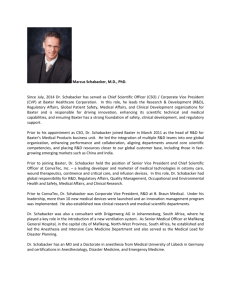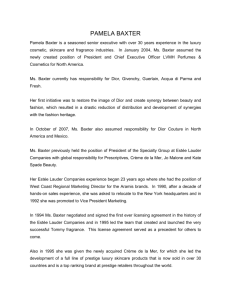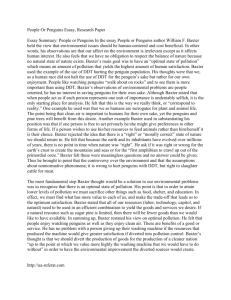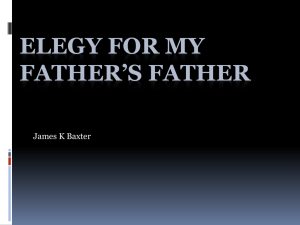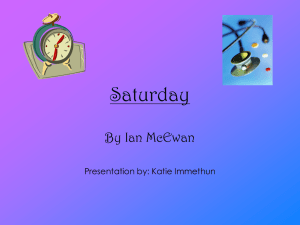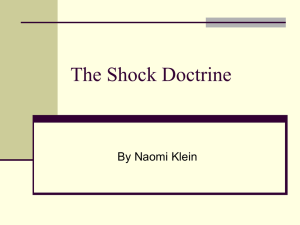Baxter-and-Sa - Page not Found
advertisement
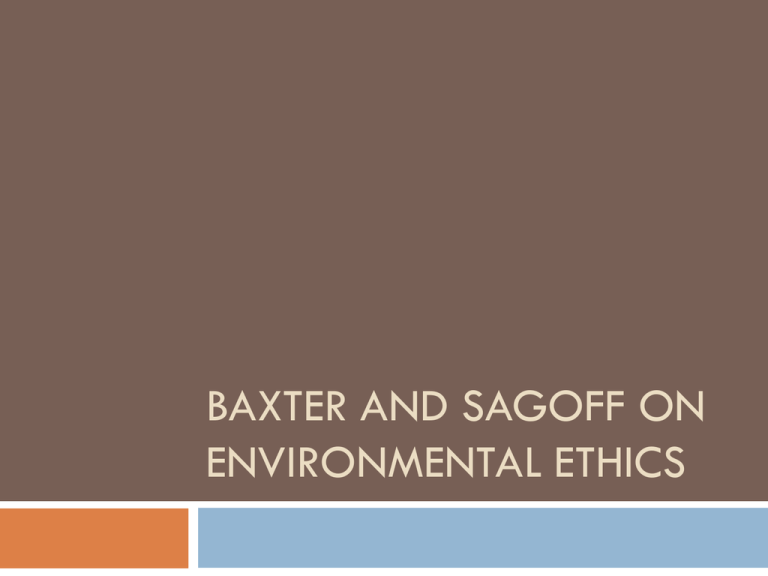
BAXTER AND SAGOFF ON ENVIRONMENTAL ETHICS 3 Approaches to the Environmental Issues (1) (2) (3) Free market approach: allow the mechanism of the free-market to determine what to do – pursuing efficiency or wealth-maximization. Baxter’s Spheres of Freedom: maximize satisfaction of human preferences without treating anyone as a mere means. Sagoff’s civic values approach: protect those cultural, historical, aesthetic and moral values that matter to communities, not collections of individuals. Baxter and the Spheres of Freedom Principle Baxter’s view about our duties to the environment is based on a principle he uses to resolve all moral and political issues. The Spheres of Freedom Principle: every person should be free to do whatever s/he wishes in contexts where his/her actions do not interfere with the interests of other human beings. Example: it is okay for me to litter so long as it does not interfere with the interests of other humans. Consequences of the Spheres of Freedom Principle The only role of government and the legislation government passes is to keep humans from interfering with the interests of other humans wherever possible. Laws that prevent individuals from harming themselves (but not others), sometimes called paternalist laws, have no place in a just society. Government must enact legislation that will prevent some members of society from harming others through pollution or other acts/effects. What Value Does The Environment Have? Only human beings have inherent moral worth. Thus, any non-human animal, plants or non-living thing has no value except insofar as it is valuable to human beings. Example: if no one were to value an ecosystem in Indiana, then it would have no value at all. But to the extent that a human does (or perhaps would) find something valuable that thing has value. Making Decisions with Baxter In determining what to do when it comes to environmental policies and decision making a business owner (like anyone else) must: - choose a policy or decision that yields greater human satisfaction than any alternative decision. - exception: that choice can not treat some human beings as means to achieve the ends of other human beings. This exception will be critical as we will see. The Free Market Approach Key tenet: the value of anything is expressed by the willingness of someone to pay for it. The market adds up the total preferences people have and assigns a price to it – this is its true worth. In the context of doing what is right or just according to market values our goal is this: distributing goods and services in the most efficient way so people get more of what they want to buy. Results of the Free-Market Approach Anything that the market cannot assign a value to has no “real” or “objective” value, only subjective value (and can be ignored). Goal of the approach is to make the market more efficient and maximize wealth. Example: pollution should only be prevented if collective preferences value clean air over other things (like cheaper prices). - In other words, pollution should only be prevented if people are willing to pay the costs. The Free-Market Approach Contrasted Incompatible with Sagoff’s community values approach since the free-market approach claims that what is important for a community doesn’t exist over and above what individuals want. Incompatible with Baxter as the free-market approach allows treating some as means for the ends of others (e.g. Wal-Mart’s reverse auctions). Sagoff’s Civic Values Approach Concedes that the free-market approach works for things that don’t have value in and of themselves – manufacturing yo-yo’s, whether pens should have black or blue ink, ice cream flavors, etc. Since all of the above are just matters of subjective preferences, the market does an excellent job of assigning worth to them. However, many valuable things are not just a matter of preference: human welfare, cultural and social history or tradition, aesthetic value, etc. Sagoff’s Civic Values Approach (cont.) Environmental issues are ones that impact noneconomic values like aesthetic value (beauty of the environment) and human welfare (health). When we evaluate whether to allow pollution we must balance it against what is best for the community. This requires studying short and long-term impacts on health, desirability of living in a polluted environment, and long-term good for the community. Sagoff’s Radioactive Waste Case Community concerned about radioactive waste dump in their community, given increased outbreaks of leukemia. NY State officials and local corporations argue that community members are being irrational. The reason? Community members supposedly would be unwilling to pay for the costs of a clean environment – they would rather risk leukemia. More likely to be endangered by smoking. How Should We Respond to this Case? Free-Market Response How would the free-market approach respond? F-M: what is the collective preference – are people willing to pay for the costs of clean-up to get the benefits they perceive? The officials of the State of New York and local corporations are using this model to argue that using site as waste dump does maximize the satisfaction of human preferences. They claim community unwilling to pay for cleanup. How Should We Respond to the Case? Baxter How would Baxter respond? Baxter: what would create greater satisfaction – clean-up or not? If we think not cleaning-up would create greatest satisfaction we must ask does that treat the members of the community as a means? Only difference between Baxter and the freemarket approach is the side-constraint of treating people as ends. How Should We Respond to the Case? How would Sagoff respond? Sagoff: what best promotes communal values in the short and long-term? Will failure to clean-up the radioactive waste be detrimental to the community? This approach diverges from both Baxter and the free-market approach by being unwilling to maximize satisfaction of preference through market values.
